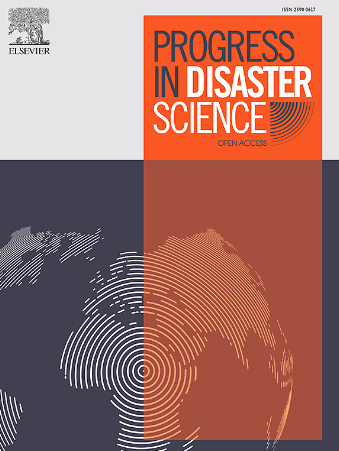Does forecast-based financing (FbF) lower women's vulnerability to flooding?
IF 3.8
Q3 ENVIRONMENTAL SCIENCES
引用次数: 0
Abstract
Forecast-based financing (FbF) is gaining traction globally in the humanitarian sector as a critical tool for reducing disaster risk. Global and national literature on FbF mainly shed light on the effectiveness in reducing household-level vulnerability without a particular focus on women's specific vulnerability. This study uses qualitative methods to analyze rural Bangladeshi women's riverine flood challenges and whether the FbF has reduced their vulnerability to flooding. The study was conducted in two distinct geographical settings in northern Bangladesh: Charland (river island) and Mainland, without flood embankment protection. The findings reveal that FbF cash assistance primarily aided rural women in reducing the financial vulnerability of their households. Spending the cash assistance on buying food and boat evacuation directly benefits women and men alike and reduces the need for taking loans. However, no spending was made on women's personal utility and safety needs before, during, and after the flood. Charland and Mainland females faced barriers to basic utility and hygiene services, with Charland women faring slightly better. Our findings suggest that existing rural socio-cultural norms, cash disbursement timing, and other factors influenced women's cash aid anticipatory action choices, and the humanitarian actors and recipients should coordinate to improve the situation.
基于预测的融资(FbF)是否降低了妇女对洪水的脆弱性?
基于预测的融资(FbF)作为减少灾害风险的关键工具,在全球人道主义部门日益受到关注。关于FbF的全球和国家文献主要阐明了减少家庭一级脆弱性的有效性,而没有特别关注妇女的具体脆弱性。本研究使用定性方法分析了孟加拉国农村妇女面临的河流洪水挑战,以及FbF是否降低了她们对洪水的脆弱性。这项研究是在孟加拉国北部两个不同的地理环境中进行的:查兰(河岛)和大陆,没有防洪堤保护。调查结果显示,FbF现金援助主要帮助农村妇女减少其家庭的财务脆弱性。将现金援助用于购买食品和船只撤离,对男女都有直接好处,并减少了贷款需求。然而,在洪水之前、期间和之后,没有任何支出用于妇女的个人公用事业和安全需求。查兰和大陆女性在基本公用事业和卫生服务方面面临障碍,查兰女性的情况略好一些。我们的研究结果表明,现有的农村社会文化规范、现金支付时间和其他因素影响了妇女的现金援助预期行动选择,人道主义行为体和受援者应协调改善这种情况。
本文章由计算机程序翻译,如有差异,请以英文原文为准。
求助全文
约1分钟内获得全文
求助全文
来源期刊

Progress in Disaster Science
Social Sciences-Safety Research
CiteScore
14.60
自引率
3.20%
发文量
51
审稿时长
12 weeks
期刊介绍:
Progress in Disaster Science is a Gold Open Access journal focusing on integrating research and policy in disaster research, and publishes original research papers and invited viewpoint articles on disaster risk reduction; response; emergency management and recovery.
A key part of the Journal's Publication output will see key experts invited to assess and comment on the current trends in disaster research, as well as highlight key papers.
 求助内容:
求助内容: 应助结果提醒方式:
应助结果提醒方式:


